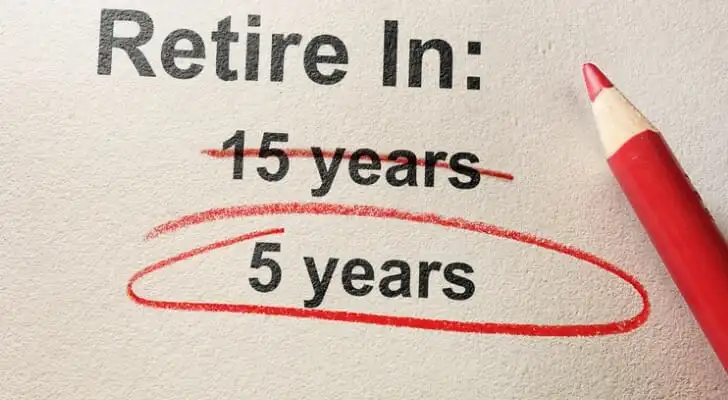Retiring early is a goal many Americans aspire to, but few feel fully confident in their ability to make it happen. While age 65 is often seen as the traditional retirement benchmark, aiming to retire by 60 requires careful planning, disciplined saving and the right investment strategy. We’ll explore the key factors and investment options to consider if you’re hoping to retire five years ahead of schedule.
A financial advisor can help you discover how to invest for retirement regardless of your target age with a plan that meets your individual goals.
Review and Restructure Your Investment Portfolio
If you’re planning to retire early, especially by age 60, your investment portfolio plays a central role in achieving that goal. Unlike retiring at a traditional age, early retirement demands that your money last longer, which means your portfolio must strike the right balance between growth and protection.
Understanding Risk Over Time
When you’re younger, conventional investing wisdom suggests you can afford to take on more risk. That’s because time is on your side, giving your investments room to recover from short-term losses. Younger investors typically hold a higher percentage of growth-oriented assets like common stocks, with smaller allocations to more stable investments like bonds or cash.
As you move closer to retirement, however, it’s important to gradually shift toward a more conservative asset mix. Traditionally, many investors follow the 60/40 rule, allocating 60% of their portfolio to stocks and 40% to bonds or other conservative investments. This split has historically offered strong diversification and reasonable returns. But recent market volatility — especially in 2022, when 60/40 portfolios declined by roughly 17.5% — shows that even a well-diversified strategy can face challenges.
That doesn’t mean the 60/40 rule is obsolete. Instead, it may simply require adjustments based on today’s market conditions, your personal risk tolerance and your retirement timeline.
Why Asset Allocation Still Matters
Asset allocation remains one of the most important strategies for managing investment risk, maximizing returns and supporting your financial goals, especially if you’re planning to leave the workforce earlier than most. Your allocation should consider:
- Your retirement time horizon
- Your risk tolerance
- How much income you’ll need from your portfolio
- Your flexibility in adjusting spending during downturns
As you near retirement, shifting gradually toward a more conservative portfolio helps reduce the risk of large losses right before or early in retirement, a time when your portfolio is most vulnerable. However, being too conservative too early can limit long-term growth and make your money less likely to last through retirement.
Sample Asset Allocation for Early Retirement at Age 60
Here’s a sample allocation for a 60-year-old planning to retire soon, assuming a moderate risk tolerance and need for both income and growth:
- 50% Stocks: Focused on dividend-paying stocks and broad-market index funds (e.g., S&P 500 or total market ETFs) for long-term growth and some income.
- 35% Bonds: A mix of short- to intermediate-term, high-quality corporate and government bonds to provide portfolio stability and income.
- 10% Alternatives: REITs or natural resources to hedge against inflation and add diversification.
- 5% Cash or cash equivalents: Held in a high-yield savings or money market account to cover immediate expenses and serve as a buffer in volatile markets.
This portfolio aims to generate steady income, provide moderate growth and limit volatility, an ideal combination for someone entering retirement but still facing a long investment horizon.
Rethinking Diversification and Correlation in Today’s Market

Since late 2021, early retirees, and investors in general, have had to reconsider how they allocate assets in their portfolios. As we mentioned above, the traditional 60/40 portfolio (60% stocks, 40% bonds), once a cornerstone of retirement investing, suffered a historic decline of around 17.5% in 2022, forcing many to reassess its effectiveness in a changing economic environment.
Historically, one of the key strengths of a 60/40 portfolio was the negative correlation between stocks and bonds. When stock prices fell, bond values often rose, helping to cushion losses and smooth out overall portfolio performance. This inverse relationship allowed investors to weather downturns in one asset class by benefiting from gains in the other.
However, today’s economic conditions have disrupted that pattern. Due to persistent inflation and rising interest rates, stocks and bonds have started to move in the same direction, both declining at times when they were once expected to offset one another. The current correlation between stocks and bonds sits at approximately +0.6, meaning their returns are now positively correlated. This shift has challenged the assumptions behind traditional diversification strategies.
To adapt, early retirement planners must stay agile. Portfolio strategies that once worked may now expose investors to greater risk than expected. Staying informed about macroeconomic trends — such as interest rate policy and inflation — and being willing to adjust your asset mix accordingly is crucial.
For those aiming to retire at 60, the takeaway is clear: Long-term success in retirement requires more than set-it-and-forget-it investing. Regular portfolio reviews, careful diversification and a willingness to evolve your strategy are all essential to protecting your retirement income and avoiding extended recovery periods during downturns.
Considerations for Retiring at Age 60
If you want to retire at 60, you won’t yet be able to receive Medicare to cover your health insurance needs. It will be necessary, in your retirement planning, to determine how you will handle your need for health insurance until the Medicare eligibility age. Health insurance can be a significant expense.
You also won’t be eligible to start drawing your Social Security benefits at 60. You’re eligible to draw partial benefits at 62, but since the benefit will never increase if you make this choice, you need to carefully consider your options. You need to be sure that the cash flow from your investments and other sources will cover your needs. You could work part-time after retirement or before you retire, and you can increase your savings to account for your needs.
Bottom Line

Retiring early can seem very desirable after you have worked for many years. To have a comfortable retirement, you need to do a lot of advance planning concerning how much money you will save and invest and how to make your investments most profitable under circumstances in the financial markets. The U.S. had a long bull market when money was easier to make. You can still make money in less certain financial markets, but it takes knowledge and planning. You must consider several issues such as what kind of lifestyle you want after retirement, health insurance, taxes and more.
Tips for Early Retirement
- Many financial advisors have specialties in retirement planning and investing. To retire early, you will need to excel in these areas. You can also find a qualified financial advisor to assist you. SmartAsset’s free tool matches you with up to three financial advisors who serve your area, and you can interview your advisor matches at no cost to decide which one is right for you. If you’re ready to find an advisor who can help you achieve your financial goals, get started now.
- SmartAsset offers an asset allocation tool that helps you determine the amount of stock, bonds, cash or other assets for your investment portfolio.
Photo credit: ©iStock.com/marekuliasz, ©iStock.com/AscentXmedia, ©iStock.com/zimmytws
